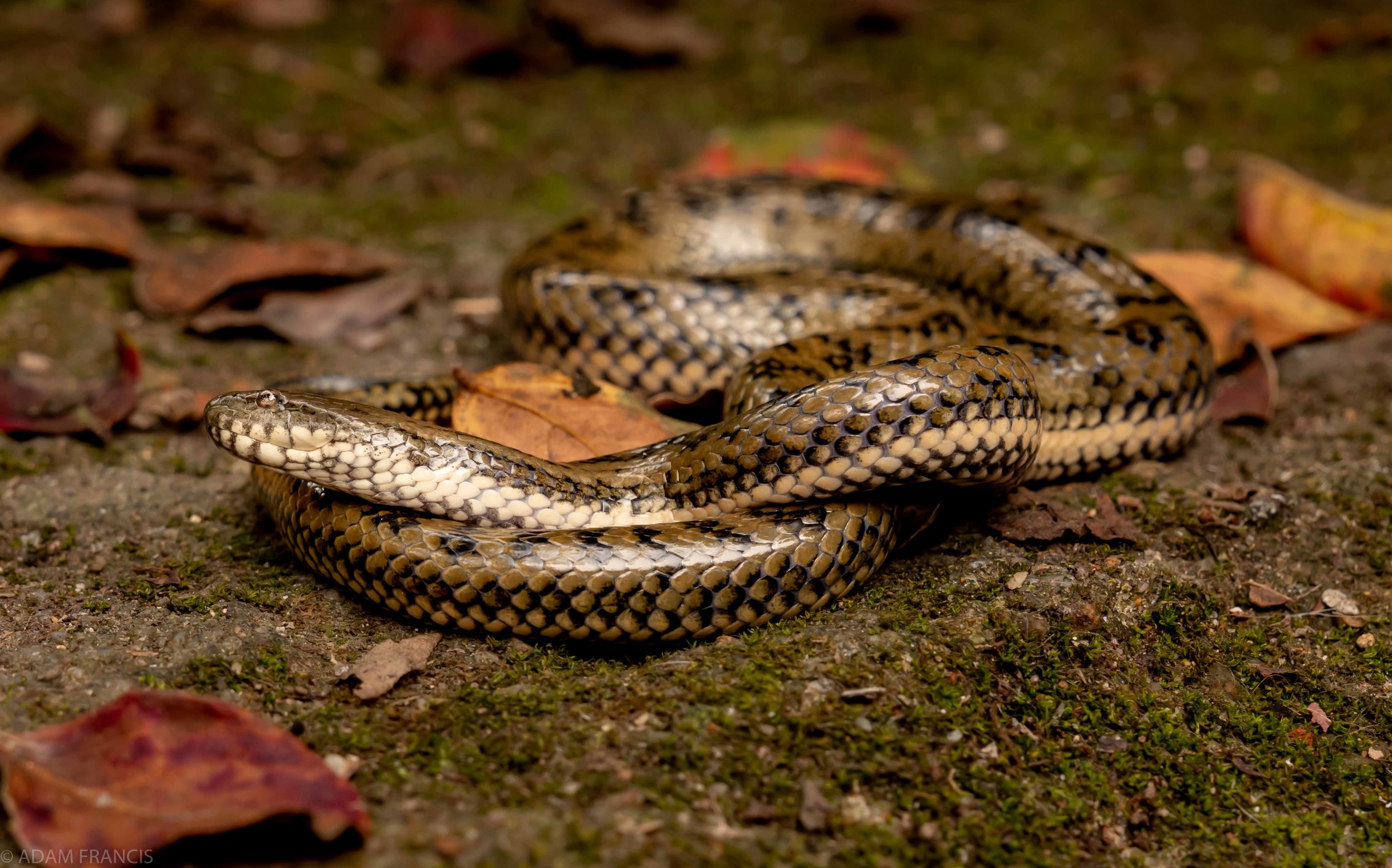SUMMARY:
Hong Kong is home to many venomous snakes, some dangerous some not
We explain the difference in this article to help the general public get more comfortable with the ‘Venomous But Not Dangerous’ lot
We’d like to open this post by stating emphatically that no matter what you learn here no one should ever put themselves in a position where they can be bitten by a wild caught snake in Hong Kong, there’s just too many ways to confuse species and too many dangerously venomous snakes to take the risk. It’s also important to note that the points we make here are not formal scientific positions and are based instead on our research, first hand experience observing and in some cases being bitten by some of these species.
With that out of the way it’s time to talk about the group of snakes that are technically venomous but present almost no danger to humans at all. The good news is these are fascinating snakes, some of which rank as my favorites in Hong Kong. So which endemic snakes fall into this category? Here they are:
So how can a snake be venomous AND not dangerous to humans? The short answer is that their venom is a) extremely mild, meant for things like geckos, fish and frogs and b) it is delivered through fangs or modified teeth located at the back of the snakes mouth.
Let’s unpack this a bit starting with the venom being ‘mild’. Why is it so mild and what does that mean for humans? We won’t speak to the chemistry of the venom but we can speak to it’s main application and effects. First we have witnessed all but two of these species eating and can confirm that in each case the snake holds on to its prey after the initial strike and in some cases actually constrict while they consume. This is different to some of the more strongly venomous snakes like the King Cobra which are often happy to deliver a single bite then stalk their prey as the powerful venom quickly shuts down their nervous system. By holding on to the prey the venom doesn’t have to kill the prey quickly so that it doesn’t get away so weather one thing was the cause of the other in the course of the snakes evolution is up for debate but the result is clear.
Being ‘rear fanged’ also contributes to this behavior as the snake has to chew its prey in order to deliver the venom. This is another reason why the snakes are not particularly dangerous to humans as a quick front tooth strike on a hand or foot will not be sufficient to deliver any venom. We have personally been bitten by both the Mock Viper and Large Spotted Cat Snake numerous times during my observations and in each case they were front tooth strikes causing a very small amount of pain with a tiny bit of blood, but no envenomation. We do however have several friends that have been envenomated by some of these species, the Mock Viper and Chinese Water Snake in particular and their effects seem similar and equally mild. In specific the Mock Viper venom is described as presenting with some initial discomfort like mild burning sensation followed by either or mild swelling and localized numbness that fades over the course of a couple of hours. It should be noted that the effects appear to differ by individual and are dependent on the extent of the envenomation. With respect to this we have been given at least one other first hand account of a Chinese Water Snake envenomation that presented the above mentioned symptoms but also some nausea and a mild headache. With all that said it is important to note that despite these numerous first hadn't accounts not resulting in any serious symptoms or long term effects it is always possible that an allergic reaction could occur so we want to reiterate how important it is to ensure you never put yourself in a position to be bitten.
Notwithstanding this point as you can see, resulting from the mild nature of the venom and the inefficient delivery systems these snakes do not present a specific danger to humans and if you see one in the wild you’ll know that despite their technically venomous status they are actually pretty harmless.
We should also note that there is always debate in the scientific community on which species are actually venomous so if there are any changes or if we receive credible feedback to this post we will make and share revisions.
For more information on each of these species stop by the ‘All Snakes Page’ on www.HongKongSnakeID.com and check out the ‘Venomous - Not Dangerous’ section.
If you enjoyed this post please share with anyone you think might like to read about our adventures and feel free to leave a comment if you have thoughts or ideas on this or future posts.
As always the opinions included here are solely those of the author(s). You should never handle or approach a snake in the wild and if you are bitten contact emergency services at '999' immediately. See our Practical Venomous Snake ID Guide if you plan to be out and about with nature in Hong Kong, and scroll through the page to obtain more advice on what to do if you are bitten as well as for snake removal services.






